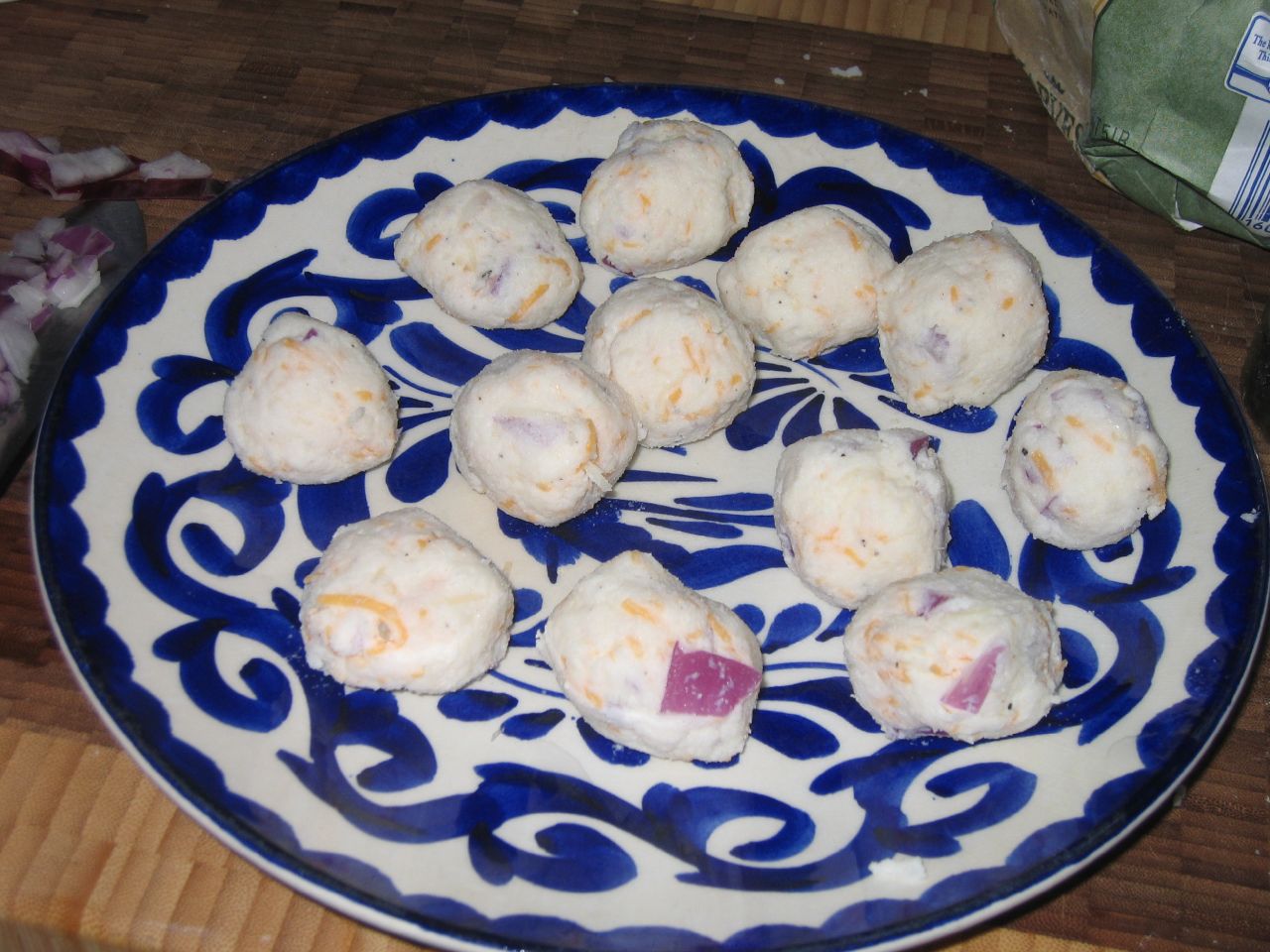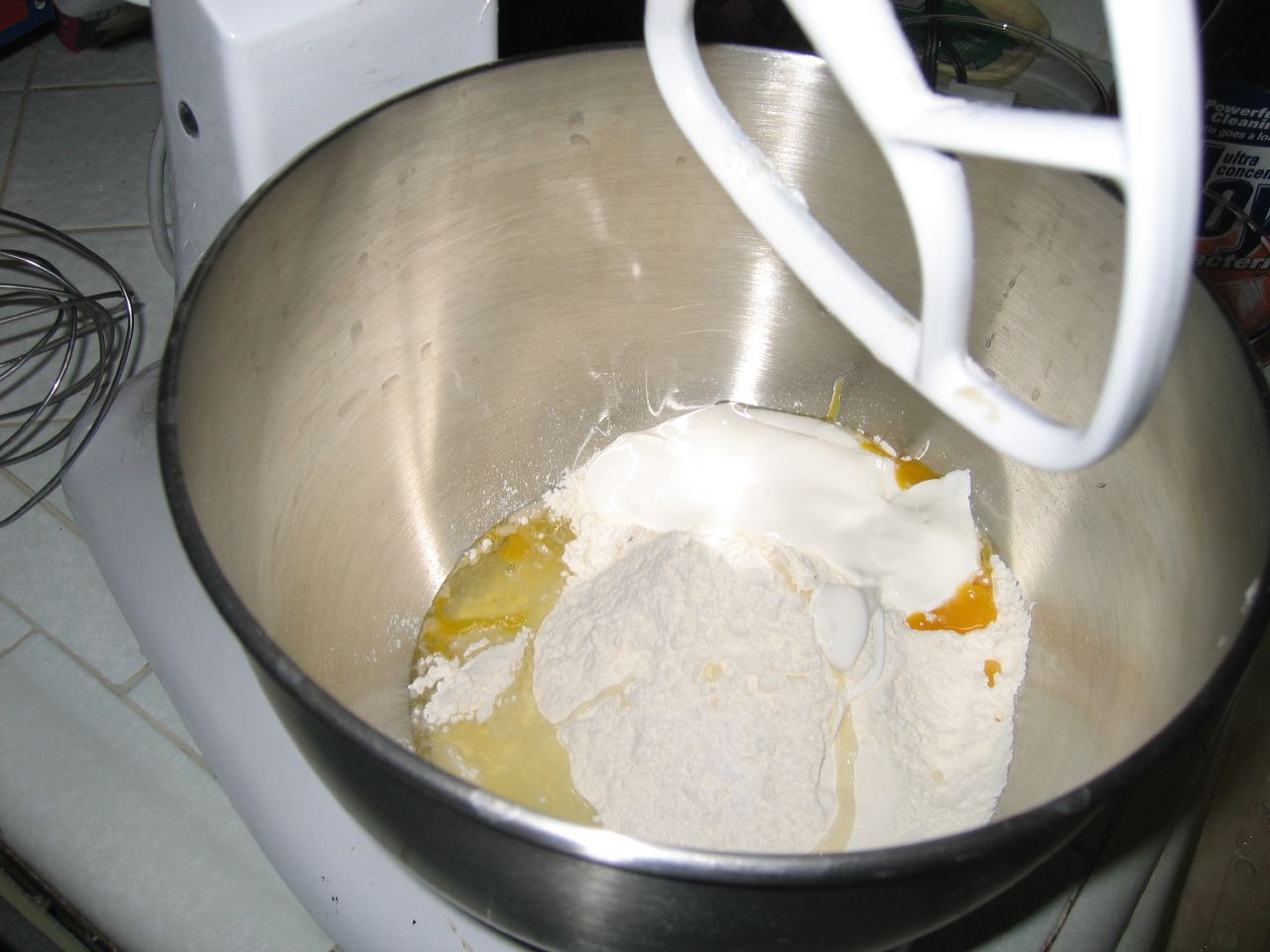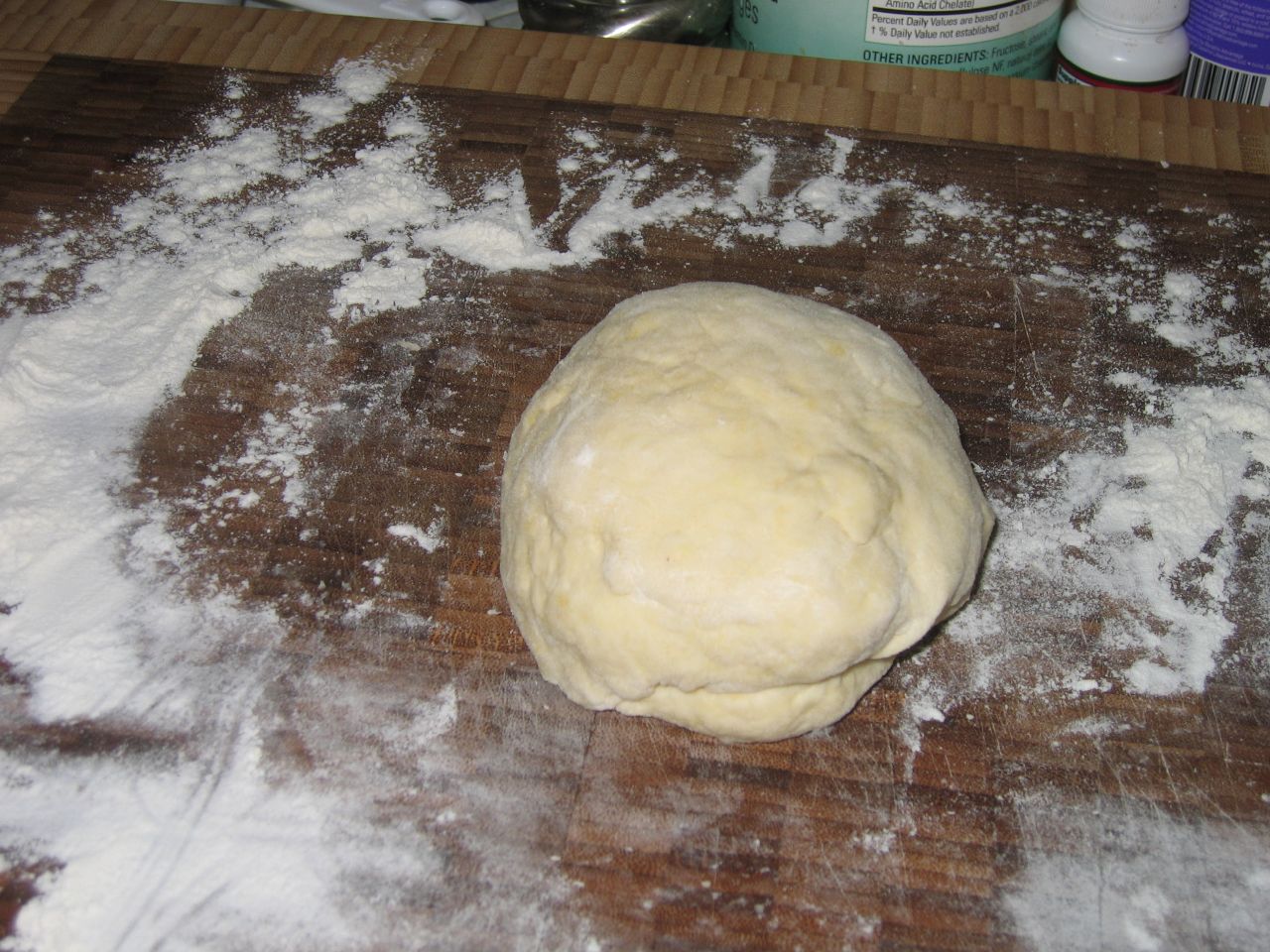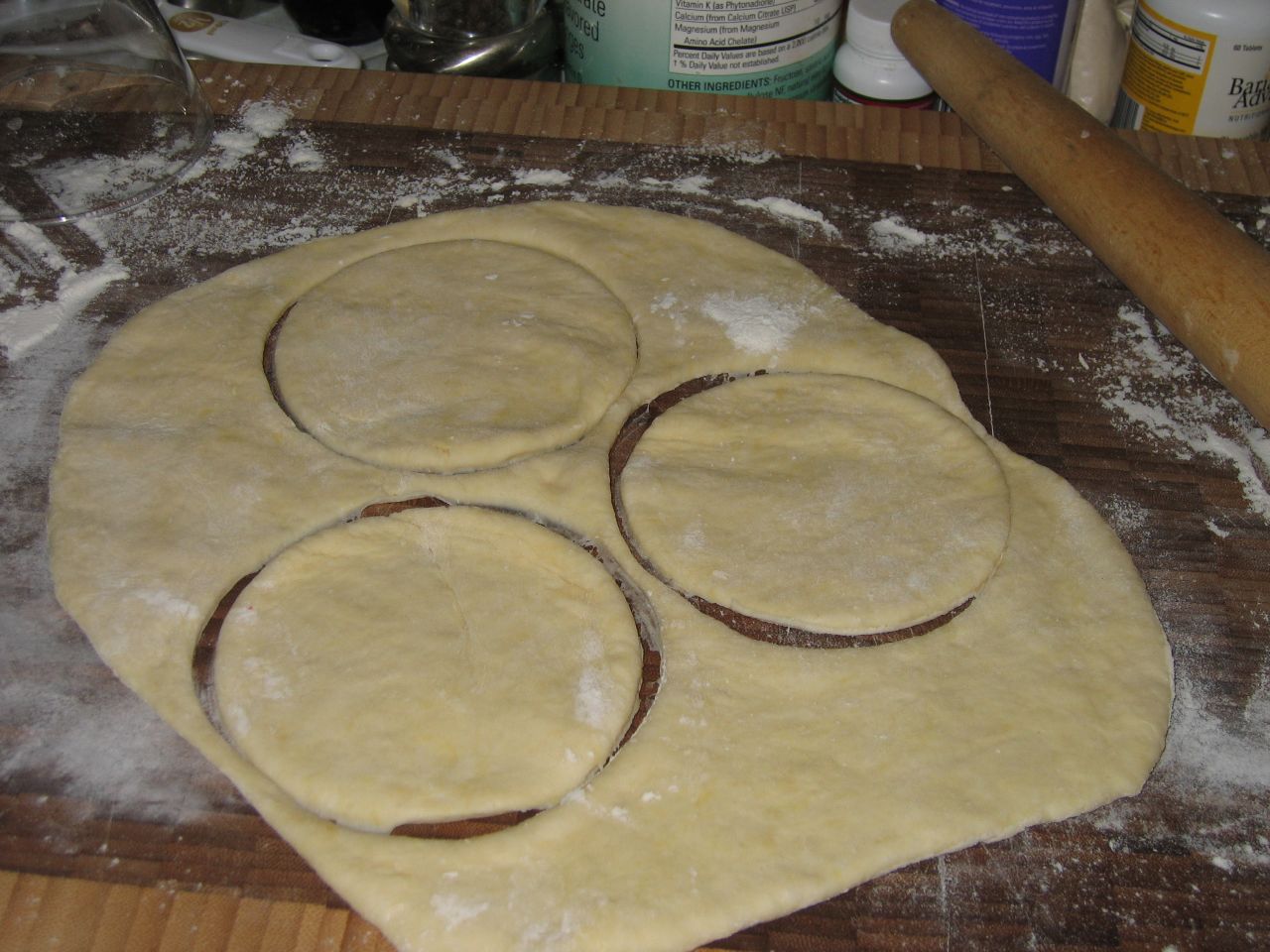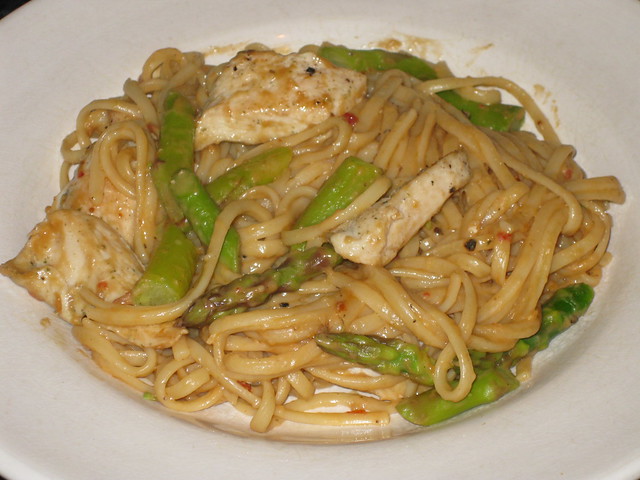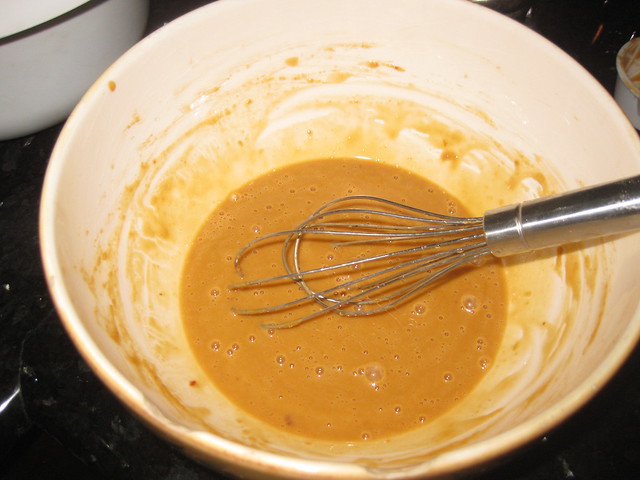
On Christmas night of 2006, my husband, my brother-in-law, Michael (along with Max and Lola), and myself had a barbecue--yes, a BBQ! It was very surreal for Matthew and Michael since they are used to a Minnesotan white Christmas, but for me, well, it's just typical. We grilled up steaks, and I made rosemary-garlicky mashed potatoes.
One thing I learned from my father-in-law, Jim, is to always cook extra potatoes and stash away a few unseasoned mashed potatoes for another use. This way, I can make lefse, gnocchi or even perogies the next day.
For me, perogies remind me of Boston because when I lived there with my now Russian ex-boyfriend, his mom used to make them for us all the time. Thank goodness that relationship went kaput, but at least I learned how to make these billowy potato dumplings. If you don't want to use a potato-cheese filling, you can also make a meat filling, like cooked ground beef with onions and olives, or even a sweet filling like ricotta with orange marmalade...believe me, the possibilities are endless.
INGREDIENTS
Potato and Cheese Filling (makes 3 cups)
- 1 tablespoon grated onions (I used red onions)
- 2 cups cold mashed potatoes
- 1/2 cup cottage cheese (or ricotta cheese)
- 1/2 cup grated mild or sharp cheddar cheese (you can also use Colby)
- 1/2 teaspoon salt, or to taste
- 1/4 teaspoon ground black pepper (use white pepper, if you have it)
- OPTIONAL: I added fresh thyme to my filling, but you don't have to
DIRECTIONS
In a large bowl add grated onions, mashed potatoes, cottage cheese and grated cheddar cheese and mix well to combine. Taste filling for seasoning, and add salt and pepper, to taste. You can always vary the proportions and ingredients in this recipe to suit your taste. Note: The filling should be thick enough to hold its shape. INGREDIENTS Perogie (makes 12 to 18, depending on how thick you roll them out)
- 2 1/2 cups flour
- 1/2 teaspoon salt
- 1 egg
- 2 teaspoons oil
- 1/4 cup sour cream
- 2/3 to 3/4 cup warm water (depending on weather and humidity)
DIRECTIONS
In a stand mixer or a large bowl, add the flour and salt and mix to combine. Add the egg, oil, sour cream and warm water and mix. Add enough water to form medium-soft dough. Knead the dough on a floured board until smooth. Do not over knead. Divide the dough into 2 parts and cover and let stand for 10 minutes.
Now, roll out the dough about 1/8" thick (or thicker, deepening on how you like them) and cut out rounds with a large biscuit cutter or with the open end of a glass. Cut out about 4 rounds at a
time. Place the round on the palm of your hand then place one ball of filling into each round and
fold over to form a half circle. Press the edges together with fingers. You can crimp the edges, if you prefer, but make sure that the edges are sealed well to prevent the filling from running out.
TO COOK: Gently drop about 3 to 4 perogies into the rapidly boiling water and cook for 4 to 6 minutes, depending on thickness of dough. Do not cook more than 4 perogies at a time. Stir very gently with a wooden spoon to separate them and to prevent them from sticking to the bottom of the pot. Perogies are done when they puff up and float to the top. Removed cooked perogies with a perforated spoon or skimmer to a colander and drain thoroughly.
Place them in a deep dish and add butter to prevent them from sticking. Serve pergoies immediately and top with more melted butter or chopped, crisp bacon, or with chopped onions lightly browned in butter. NOTE: You can quickly pan-fry the perogies after you've boiled them in even more butter (which is what I did) and top them with cooked onions in butter. Talk about heart-attack!
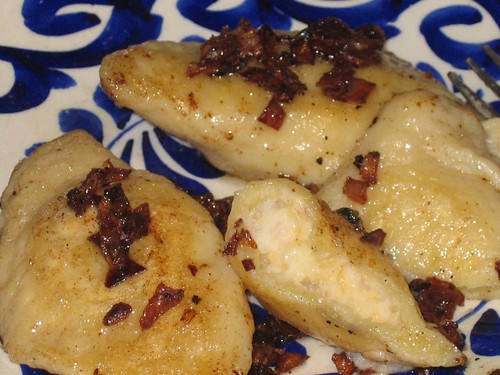
If you don't plan cooking all perogies, simply place uncooked perogies on a floured cookie sheet. Make sure they are not touching each other, and freeze them. Once they have frozen solid, place them in a plastic baggie and keep frozen. TO REHEAT: Boil them in salted water for 7 to 10 minutes.
